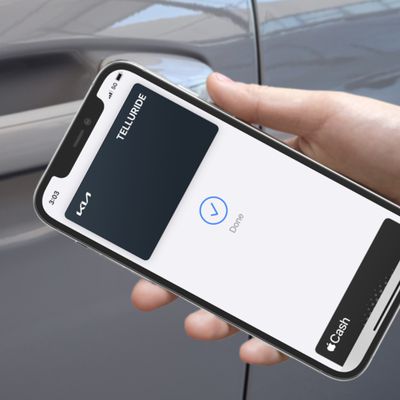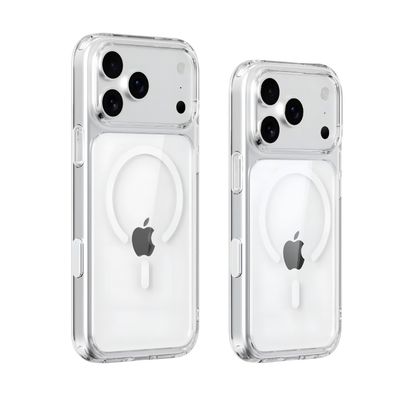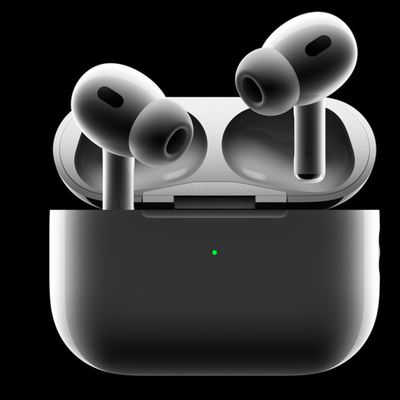Apple's iPad 5 Set to Continue Driving Market Shift Toward In-Cell Display Technology
Digitimes reports that the adoption of new touch-sensor systems in both the iPhone 5 and iPad has caused a notable shift in the supply chain of the touch panel market, according to research carried out by the firm DisplaySearch.
Displays with in-cell touch are expected to rise from 7.3% of mobile phone shipments in 2012 to 13.7% in 2013, while shipments of GG DITO (double-sided ITO glass) structure are expected to decline from 10.3% to 0.6%. For tablets, shipments of GF2 sensor structure are expected to rise from 4.7% in 2012 to 28.4% in 2013, while shipments of GG DITO structure decline from 37.2% to 8.1%.
Calvin Hseih, research director at DisplaySearch, notes that Apple has been primarily responsible for this shift, despite the massive number of touchscreen devices already on the market. Apple's shift from a GG type touch-sensor system (glass on glass) to in-cell touch technology and GF2 (whereby the second layer of glass is replaced by an optical film) has rapidly influenced the entire supply chain

Apple switched from GG to in-cell touch technology with the iPhone 5 release back in September 2012 and the iPad mini and fourth-generation iPad also feature GF2 technology.
Another report by Digitimes reiterates
previous rumors that the upcoming fifth-generation iPad, which is slated to be released sometime in Q4 2013, will feature GF2 touch technology.
That technology will allow the new iPad to be thinner and lighter than previous models, with the technology being supplied by TPK and GIS. The fifth-generation iPad has been rumored and shown in leaked parts to be significantly smaller and thinner than the current iPad, taking design cues from the iPad mini.
Popular Stories
Apple's next-generation iPhone 17 Pro and iPhone 17 Pro Max are just over two months away, and there are plenty of rumors about the devices.
Below, we recap key changes rumored for the iPhone 17 Pro models.
Latest Rumors
These rumors surfaced in June and July:Apple logo repositioned: Apple's logo may have a lower position on the back of the iPhone 17 Pro models, compared to previous...
Apple should unveil the iPhone 17 series in September, and there might be one bigger difference between the Pro and Pro Max models this year.
As always, the Pro Max model will be larger than the Pro model:iPhone 17 Pro: 6.3-inch display
iPhone 17 Pro Max: 6.9-inch displayGiven the Pro Max is physically larger than the Pro, it has more internal space, allowing for a larger battery and...
In 2020, Apple added a digital car key feature to its Wallet app, allowing users to lock, unlock, and start a compatible vehicle with an iPhone or Apple Watch. The feature is currently offered by select automakers, including Audi, BMW, Hyundai, Kia, Genesis, Mercedes-Benz, Volvo, and a handful of others, and it is set to expand further.
Apple has a web page with a list of vehicle models that ...
The calendar has turned to July, meaning that 2025 is now more than half over. And while the summer months are often quiet for Apple, the company still has more than a dozen products coming later this year, according to rumors.
Below, we have outlined at least 15 new Apple products that are expected to launch later this year, along with key rumored features for each.
iPhone 17 Series
iPho...
Amazon is soon to be back with its annual summertime Prime Day event, lasting for four days from July 8-11, the longest Prime Day yet. As it does every year, Prime Day offers shoppers a huge selection of deals across Amazon's storefront, and there are already many deals you can get on sale ahead of the event.
Note: MacRumors is an affiliate partner with Amazon. When you click a link and make a ...
New renders today provide the best look yet relocated Apple logo and redesigned MagSafe magnet array of the iPhone 17 Pro and iPhone 17 Pro Max.
Image via Majin Bu.
Several of the design changes coming to the iPhone 17 Pro model have been rumored for some time, such as the elongated camera bump that spans the full width of the device, with the LiDAR Scanner and flash moving to the right side.
...
Apple's position as the dominant force in the global true wireless stereo (TWS) earbud market is expected to continue through 2025, according to Counterpoint Research.
The forecast outlines a 3% year-over-year increase in global TWS unit shipments for 2025, signaling a transition from rapid growth to a more mature phase for the category. While Apple is set to remain the leading brand by...
Apple is continuing to refine and update iOS 26, and beta three features smaller changes than we saw in beta 2, plus further tweaks to the Liquid Glass design. Apple is gearing up for the next phase of beta testing, and the company has promised that a public beta is set to come out in July.
Transparency
In some apps like Apple Music, Podcasts, and the App Store, Apple has toned down the...
Since the iPhone X in 2017, all of Apple's highest-end iPhone models have featured either stainless steel or titanium frames, but it has now been rumored that this design decision will be coming to an end with the iPhone 17 Pro models later this year.
In a post on Chinese social media platform Weibo today, the account Instant Digital said that the iPhone 17 Pro models will have an aluminum...






















